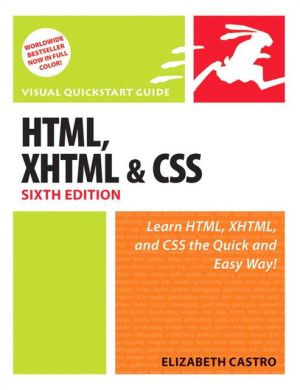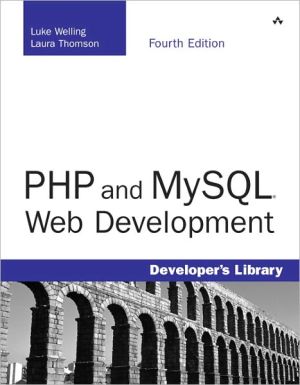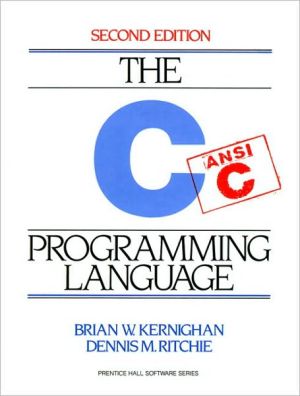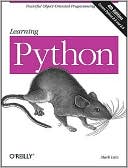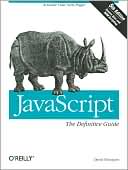Ant in Action
This second edition of a Manning bestseller has been revised and re-titled to fit the 'In Action' Series by Steve Loughran, an Ant project committer. Ant in Action introduces Ant and how to use it for test-driven Java application development. Ant itself is moving to v1.7, a major revision, at the end of 2006 so the timing for the book is right. A single application of increasing complexity, followed throughout the book, shows how an application evolves and how to handle the problems of...
Search in google:
This second and completely updated edition introduces Ant and how to use it for test-driven Java application development. A single application of increasing complexity, followed throughout the book, shows how an application evolves and how to handle the problems of building and testing.
Preface to the second edition xixForeword to the first edition xxiPreface to the first edition xxiiiAcknowledgments xxvAbout this book xxviiAbout the authors xxxiAbout the cover illustration xxxiiIntroduction to the Second Edition 1Learning Ant 3Introducing Ant 5What is Ant? 5The core concepts of Ant 6Ant in action: an example project 8What makes Ant so special? 11When to use Ant 12When not to use Ant 13Alternatives to Ant 13IDEs 13Make 14Maven 16The ongoing-evolution of Ant 16Summary 17A first Ant build 19Defining our first project 19Step zero: creating the project directory 20Step one: verifying the tools are in place 20Step two: writing your first Ant build file 21Examining the build file 21Step three: running your first build 23If the buildfails 23Looking at the build in more detail 25Step four: imposing structure 27Laying out the source directories 28Laying out the build directories 29Laying out the distribution directories 29Creating the build file 31Target dependencies 32Running the new build file 33Incremental builds 34Running multiple targets on the command line 35Step five: running our program 36Why execute from inside Ant? 36Adding an "execute" target 37Running the new target 38Ant command-line options 39Specifying which build file to run 40Controlling the amount of information provided 41Coping with failure 42Getting information about a project 42Examining the final build file 43Running the build under an IDE 44Summary 45Understanding Ant datatypes and properties 47Preliminaries 48What is an Ant datatype? 48Property overview 48Introducing datatypes and properties with [left angle bracket]javac[right angle bracket] 49Paths 52How to use a path 53Filesets 53Patternsets 54Selectors 58Additional Ant datatypes 59Properties 61Setting properties with the [left angle bracket]property[right angle bracket] task 62Checking for the availability of files: [left angle bracket]available[right angle bracket] 66Testing conditions with [left angle bracket]condition[right angle bracket] 67Creating a build timestamp with [left angle bracket]tstamp[right angle bracket] 69Setting properties from the command line 70Controlling Ant with properties 70Conditional target execution 71Conditional build failure 72Conditional patternset inclusion/exclusion 72References 73Viewing datatypes 73Managing library dependencies 75Resources: Ant's secret data model 76Best practices 76Summary 77Testing with JUnit 79What is testing, and why do it? 80Introducing our application 81The application: a diary 81How to test a program 83Introducing JUnit 84Writing a test case 86Running a test case 86Asserting desired results 87Adding JUnit to Ant 90Writing the code 92The JUnit task: [left angle bracket]junit[right angle bracket] 93Fitting JUnit into the build process 94Halting the build when tests fail 96Viewing test results 96Running multiple tests with [left angle bracket]batchtest[right angle bracket] 98Generating HTML test reports 99Halting the builds after generating reports 101Advanced [left angle bracket]junit[right angle bracket] techniques 102Best practices 106The future of JUnit 107Summary 108Packaging projects 110Working with files 111Deleting files 112Copying files 113Moving and renaming files 114Introducing mappers 114Modifying files as you go 119Preparing to package 120Adding data files to the classpath 121Generating documentation 122Patching line endings for target platforms 124Creating JAR files 126Testing the JAR file 128Creating JAR manifests 129Adding extra metadata on the JAR 131JAR file best practices 132Signing JAR files 132Testing with JAR files 135Creating Zip files 136Creating a binary Zip distribution 137Creating a source distribution 138Zip file best practices 139Packaging for Unix 139Tar files 139Generating RPM packages 143Working with resources 143A formal definition of a resource 143What resources are there? 144Resource collections 145Summary 147Executing programs 149Running programs under Ant-an introduction 149Introducing the [left angle bracket]java[right angle bracket] task 151Setting the classpath 152Arguments 153Defining system properties 155Running the program in a new JVM 156JVM tuning 157Handling errors 158Executing JAR files 160Running native programs 161Running our diary as a native program 162Executing shell commands 162Running under different Operating Systems 163Probing for a program 166Advanced [left angle bracket]java[right angle bracket] and [left angle bracket]exec[right angle bracket] 167Setting environment variables 167Handling timeouts 168Running a program in the background 169Input and output 170Piped I/O with an I/O redirector 171FilterChains and FilterReaders 172Bulk operations with [left angle bracket]apply[right angle bracket] 174How it all works 176[left angle bracket]java[right angle bracket] 176[left angle bracket]exec[right angle bracket] and [left angle bracket]apply[right angle bracket] 177Best practices 177Summary 178Distributing our application 179Preparing for distribution 180Securing our distribution 181Server requirements 183FTP-based distribution of a packaged application 183Uploading to Unix 184Uploading to a Windows FTP server 185Uploading to SourceForge 186FTP dependency logic 187Email-based distribution of a packaged application 188Sending HTML messages 191Secure distribution with SSH and SCP 192Uploading files with SCP 193Downloading files with [left angle bracket]scp[right angle bracket] 195Remote execution with [left angle bracket]sshexec[right angle bracket] 197Troubleshooting the SSH tasks 197HTTP download 198How to probe for a server or web page 199Fetching remote files with [left angle bracket]get[right angle bracket] 200Performing the download 201Distribution over multiple channels 203Calling targets with [left angle bracket]antcall[right angle bracket] 203Distributing with [left angle bracket]antcall[right angle bracket] 206Summary 208Putting it all together 209How to write good build files 209Building the diary library 210Starting the project 210The public entry points 211Setting up the build 212Compiling and testing 216Packaging and creating a distribution 218Distribution 222Adopting Ant 225Building an existing project under Ant 228Summary 230Applying Ant 231Beyond Ant's core tasks 233The many different categories of Ant tasks 234Installing optional tasks 236Troubleshooting 238Optional tasks in action 239Manipulating property files 239Improving [left angle bracket]javac[right angle bracket] with dependency checking 241Software configuration management under Ant 243Using third-party tasks 245Defining tasks with [left angle bracket]taskdef[right angle bracket] 246Declaring tasks defined in property files 247Defining tasks into a unique namespace 248Defining tasks from an Antlib 249The Ant-contrib tasks 250The Ant-contrib tasks in action 253Code auditing with Checkstyle 259Summary 263Working with big projects 264Master builds: managing large projects 265Introducing the [left angle bracket]ant[right angle bracket] task 266Designing a scalable, flexible master build file 268Controlling child project builds 270Setting properties in child projects 270Passing down properties and references in [left angle bracket]ant[right angle bracket] 272Advanced delegation 275Getting data back 276Inheriting build files through [left angle bracket]import[right angle bracket] 277XML entity inclusion 277Importing build files with [left angle bracket]import[right angle bracket] 278How Ant overrides targets 279Calling overridden targets 280The special properties of [left angle bracket]import[right angle bracket] 281Applying [left angle bracket]import[right angle bracket] 283Extending an existing build file 283Creating a base build file for many projects 284Mixin build files 286Best practices with [left angle bracket]import[right angle bracket] 287Ant's macro facilities 288Redefining tasks with [left angle bracket]presetdef[right angle bracket] 288The hazards of [left angle bracket]presetdef[right angle bracket] 290Writing macros with [left angle bracket]macrodef[right angle bracket] 291Passing data to a macro 292Local variables 294Effective macro use 295Summary 296Managing dependencies 297Introducing Ivy 299The core concepts of Ivy 299Installing Ivy 301Configuring Ivy 302Resolving, reporting, and retrieving 304Creating a dependency report 305Retrieving artifacts 306Setting up the classpaths with Ivy 307Working across projects with Ivy 308Sharing artifacts between projects 308Using published artifacts in other projects 310Using Ivy to choreograph builds 313Other aspects of Ivy 315Managing file versions through Ivy variables 315Finding artifacts on the central repository 316Excluding unwanted dependencies 317Private repositories 317Moving to Ivy 318Summary 318Developing for the Web 320Developing a web application 321Writing a feed servlet 323Libraries in web applications 324Writing web pages 325Creating a web.xml file 327Building the WAR file 328Deployment 329Deployment by copy 330Post-deployment activities 331Probing for server availability 331Pausing the build with [left angle bracket]sleep[right angle bracket] 333Testing web applications with HttpUnit 333Writing HttpUnit tests 334Compiling the HttpUnit tests 337Running the HttpUnit tests 338Summary 339Working with XML 340Background: XML-processing libraries 341Writing XML 341Validating XML 343Validating documents using DTD files 345Validating documents with XML Schema 347Validating RelaxNG documents 349Reading XML data 352Transforming XML with XSLT 353Defining the structure of the constants file 354Creating the constants file 355Creating XSL style sheets 355Initializing the build file 358Summary 362Enterprise Java 363Evolving the diary application 364Making an Enterprise application 365Creating the beans 366Compiling Java EE-annotated classes 368Adding a session bean 369Extending the web application 371Building the Enterprise application 373Deploying to the application server 378Server-side testing with Apache Cactus 378Writing a Cactus test 379Building Cactus tests 380The Cactus Ant tasks 381Adding Cactus to an EAR file 382Running Cactus tests 383Diagnosing EJB deployment problems 384Summary 385Continuous integration 387Introducing continuous integration 388What do you need for continuous integration? 390Luntbuild 391Installing Luntbuild 393Running Luntbuild 393Configuring Luntbuild 394Luntbuild in action 400Review of Luntbuild 401Moving to continuous integration 402Summary 404Deployment 406How to survive deployment 407Deploying with Ant 410Database setup in Ant 411Creating and configuring a database from Ant 412Issuing database administration commands 413Deploying with SmartFrog 415SmartFrog: a new way of thinking about deployment 415The concepts in more detail 417The SmartFrog components 425Using SmartFrog with Ant 426Deploying with SmartFrog 428Deploying with the [left angle bracket]deploy[right angle bracket] task 433Summary of SmartFrog 435Embracing deployment 436Summary 438Extending Ant 441Writing Ant tasks 443What exactly is an Ant task? 444The life of a task 445Introducing Ant's Java API 446Ant's utility classes 451A useful task: [left angle bracket]filesize[right angle bracket] 453Writing the task 453How Ant configures tasks 455Configuring the [left angle bracket]filesize[right angle bracket] task 457Testing tasks with AntUnit 458Using AntUnit 458Testing the [left angle bracket]filesize[right angle bracket] task 460Running the tests 461More task attributes 463Enumerations 463User-defined types 465Supporting nested elements 465Working with resources 467Using a resource-enabled task 470Delegating to other tasks 471Setting up classpaths in a task 472Other task techniques 476Making an Antlib library 478Summary 481Extending Ant further 483Scripting within Ant 484Writing new tasks with [left angle bracket]scriptdef[right angle bracket] 486Scripting summary 489Conditions 490Writing a conditional task 492Writing a custom resource 493Using a custom resource 496How Ant datatypes handle references 496Selectors 497Scripted selectors 499Developing a custom mapper 499Implementing a custom filter 501Handling Ant's input and output 503Writing a custom listener 505Writing a custom logger 509Using loggers and listeners 511Handling user input with an InputHandler 512Embedding Ant 512Summary 514Installation 516Before you begin 516The steps to install Ant 517Setting up Ant on Windows 517Setting up Ant on Unix 518Installation configuration 520Troubleshooting installation 520XML Primer 525XML namespaces 529IDE Integration 531How IDEs use Ant 531Eclipse http://www.eclipse.org/ 533Sun NetBeans http://www.netbeans.org/ 539IntelliJ IDEA http://intellij.com/ 543Building with Ant and an IDE 546Index 549


